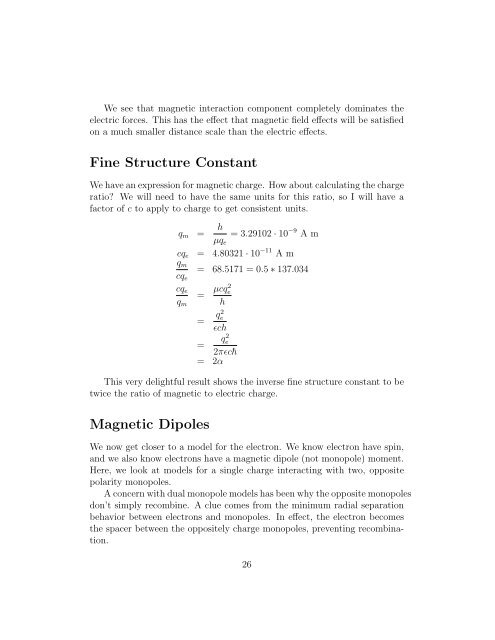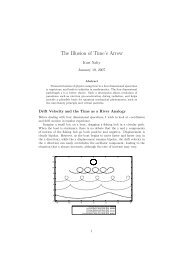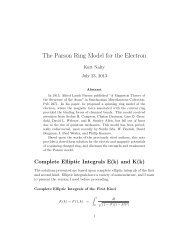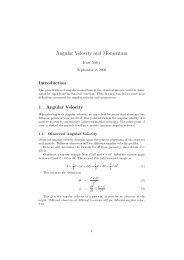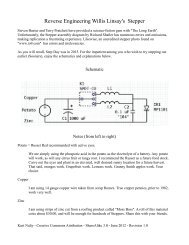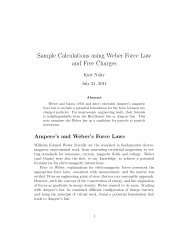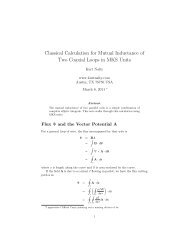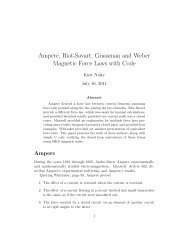Exercises with Magnetic Monopoles - Kurt Nalty
Exercises with Magnetic Monopoles - Kurt Nalty
Exercises with Magnetic Monopoles - Kurt Nalty
You also want an ePaper? Increase the reach of your titles
YUMPU automatically turns print PDFs into web optimized ePapers that Google loves.
We see that magnetic interaction component completely dominates the<br />
electric forces. This has the effect that magnetic field effects will be satisfied<br />
on a much smaller distance scale than the electric effects.<br />
Fine Structure Constant<br />
We have an expression for magnetic charge. How about calculating the charge<br />
ratio? We will need to have the same units for this ratio, so I will have a<br />
factor of c to apply to charge to get consistent units.<br />
q m = h = 3.29102 · 10 −9 A m<br />
µq e<br />
cq e = 4.80321 · 10 −11 A m<br />
q m<br />
= 68.5171 = 0.5 ∗ 137.034<br />
cq e<br />
cq e<br />
= µcq2 e<br />
q m h<br />
= q2 e<br />
ɛch<br />
qe<br />
2 =<br />
2πɛc¯h<br />
= 2α<br />
This very delightful result shows the inverse fine structure constant to be<br />
twice the ratio of magnetic to electric charge.<br />
<strong>Magnetic</strong> Dipoles<br />
We now get closer to a model for the electron. We know electron have spin,<br />
and we also know electrons have a magnetic dipole (not monopole) moment.<br />
Here, we look at models for a single charge interacting <strong>with</strong> two, opposite<br />
polarity monopoles.<br />
A concern <strong>with</strong> dual monopole models has been why the opposite monopoles<br />
don’t simply recombine. A clue comes from the minimum radial separation<br />
behavior between electrons and monopoles. In effect, the electron becomes<br />
the spacer between the oppositely charge monopoles, preventing recombination.<br />
26


